Are you tired of trying different methods to reduce pigmentation on your face? Have you tried expensive treatments only to find yourself disappointed?
We all know that there are certain foods which help us lose weight, others which help us gain weight, and still others which keep our bodies healthy.
But what about those foods which help us look younger? Those which help us improve our skin tone and complexion?
Ayurveda uses herbs and spices to treat various diseases. Some of these include Ayurvedic medicine for face pigmentation for skin problems such as pigmentation and acne. It also treats other conditions like fever, cough, cold, asthma, arthritis, indigestion, constipation, diabetes, hypertension, heartburn, gout, insomnia, back pain, joint pain, and obesity.
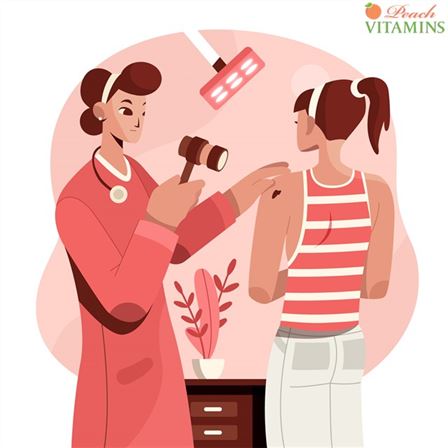
Skin Pigmentation Disorders
Pigment disorders are common skin conditions that cause discoloration of the skin. They include melasma (also known as chloasma), post-inflammatory hyperpigmentation, and freckles.
Melasma is a condition characterized by dark patches of pigmentation on the face. The most common causes of melasma are pregnancy, hormonal changes, sun exposure, and genetics.
Post-inflammatory hyperpigmentation is a type of pigment disorder that occurs after injury to the skin. This includes acne scars, birthmarks, and tattoos.
Freckles are small brown spots that appear on the face, neck, chest, arms, hands, legs, feet, buttocks, and back. Freckles are usually harmless, but some people may be sensitive to sunlight.
Hyperpigmentation
Hyperpigmentation is a condition where dark spots appear on the skin. This can be due to sun exposure, aging, genetics, and many other factors.
There are several treatments available for hyperpigmentation, including topical creams, laser therapy, and chemical peels. However, some of these treatments may cause irritation, redness, swelling, and pain.
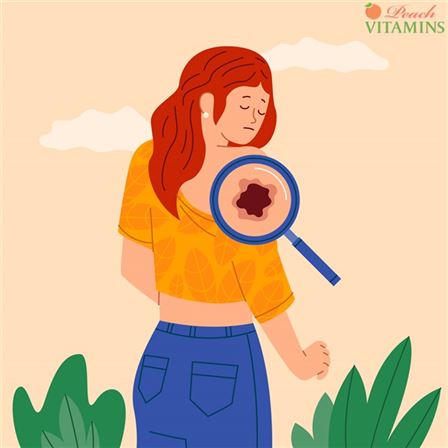
Which Oil Is Good for Pigmentation on Face?
If you’re looking for a natural treatment for pigmentation, Ayurveda offers several remedies that can help lighten dark spots. Here are four of them:
1) Shirodhara
Shirodhara, or ‘head-to-toe oil’, is one of the oldest Ayurvedic therapies in existence. It’s said to promote overall well-being by balancing the three doshas. It helps relieve stress, anxiety, depression, and fatigue.
It involves pouring a warm oil from the crown of the head down the spine, over the shoulders, across the chest, and down the front of the body. You should do this while sitting comfortably with eyes closed.
2) Triphala Churna
Triphala churna is another popular Ayurvedic remedy for pigmentation. It comprises bitter neem leaves, black gram seeds, and amalaki fruit. It’s thought to have anti-bacterial properties and purify blood.
3) Amla Powder
Amla powder is often recommended for treating pigmentation. It contains vitamin C, calcium, iron, zinc, magnesium, manganese, copper, phosphorus, and potassium. It’s believed to soothe inflammation, reduce scarring, and prevent infections.
4) Aloe Vera Gel
Aloe vera gel is used to heal cuts, burns, insect bites, and rashes. It’s also useful for treating pigmentation because it reduces inflammation and speeds healing.
The benefits for skin of using Ayurvedic medicines for face pigmentation are many. There are no side effects associated with these products. Plus, they’re completely safe and nonaddictive.
Vitiligo
Vitiligo is a skin condition characterized by patches of depigmented skin. The cause is unknown, but some researchers believe it may be linked to autoimmune disorders.
There are several treatments available for vitiligo including topical creams, laser therapy, and surgery. However, these treatments aren’t effective for everyone. Some medications can trigger adverse reactions.
Fortunately, there are several natural remedies for vitiligo that don’t involve any medication.
Depigmentation may be recommended for adults who have vitiligo on over 50% of their bodies, although it may not be widely available.
Source: nhs.uk
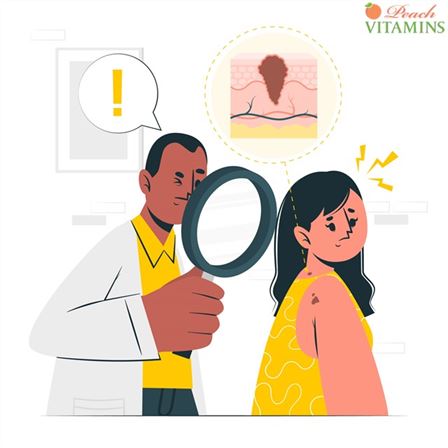
Etiological Factors
Pigmentary disorders are common skin conditions that affect millions of Americans every day. The most common pigmentary disorder is melasma, or dark spots on the face.
Melasma occurs when melanin production increases in the basal layer of the epidermis, causing brownish patches to appear on the face. This condition usually appears during pregnancy, after childbirth, or during menopause.
There are many causes of melasma, including hormonal imbalances, sun exposure, genetics, and stress. However, there are some effective treatments available.
One treatment option is Ayurvedic medicine. Ayurveda is a traditional system of medicine based on the principles of nature. It focuses on treating the root cause of disease rather than just symptoms.
Ayurvedic medicines are used to treat various diseases, including pigmentation problems. Some of these additional remedies include amla (Indian gooseberry), ashwagandha (Indian ginseng), bibhitaki (hibiscus), kalmegh (kalmia latifolia), and shatavari (asparagus).
These herbs help reduce inflammation and stimulate circulation, reducing the appearance of dark spots. They may also improve blood flow to the affected areas.
Other Ayurvedic treatments include massaging the area with oil, applying herbal creams, and using mud packs. These methods work best if they’re combined with regular sunscreen use.
Skin Tone
Skin tone is a complex topic. There are many factors that affect skin tone, including genetics, diet, hormones, stress, sun exposure, and age.
But there are some simple things you can do to improve your skin tone.
First, drink plenty of water. Water helps keep your skin hydrated and healthy.
Second, eat foods rich in vitamin C. Vitamin C helps produce collagen, which keeps your skin firm and smooth.
Third, avoid smoking. Smoking damages blood vessels, causing them to become inflamed and leak fluid into the skin. This causes dark spots and wrinkles.
Fourth, use sunscreen every day. Sunscreen blocks harmful ultraviolet rays from damaging your skin.
Finally, exercise regularly. Exercise improves circulation, which increases oxygen flow to your skin. This makes your skin glow and feel healthier.
Darker skin tones have more melanocytes, the cells that produce melanin. Melanin protects skin from damage caused by free radicals.
However, this protection comes at a cost. People with darker skin tones often get more freckles and moles.
This serious cosmetic problem occurs in 0.6% of Japanese, but is also seen in Chinese, East Indians, Blacks, and Whites.
Source: ncbi.nlm.nih.gov
There are many ways to improve your skin tone, but these four tips should help you achieve beautiful skin.
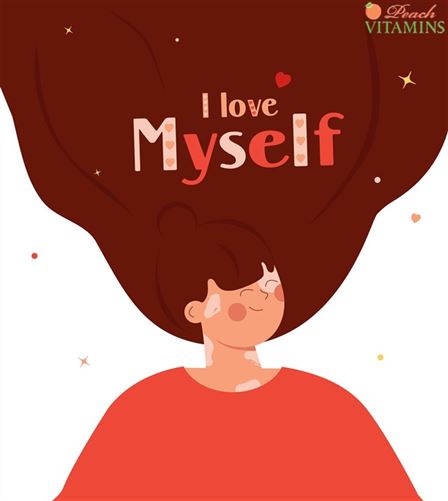
Oily Skin
Oily skin is a common problem among women. Most women experience some degree of oily skin during pregnancy, especially in the last trimester. Oily skin is often associated with hormonal imbalances, stress, diet, and genetics.
Ayurvedic medicine treats the root cause of oily skin rather than just treating symptoms. It focuses on balancing the body’s doshas (vata, pitta, and kapha) and promoting healthy digestion.
Ayurvedics believe excess vata dosha, which causes oil production in the body causes that oily skin. They recommend herbal remedies to reduce oil production and balance the doshas.
Ayurvedically, oily skin is treated by reducing oil production and balancing the doshas. This includes herbs that help cleanse the liver and digestive tract, herbs that stimulate digestion, herbs that calm the mind and nerves, and herbs that cool the body.
Age Spots
Age spots are dark brown patches that appear on the skin due to sun damage. They’re usually found on the face, neck, chest, shoulders, arms, hands, legs, feet, and sometimes the back.
They’re often mistaken for liver spots, but age spots are actually a different type of pigmentation. Melanin causes age spots, a pigment made by cells called melanocytes. Melanocytes produce melanin when exposed to ultraviolet radiation.
When the body produces too much melanin, it forms age spots. The most common cause of age spots is sun exposure. However, some people inherit them.
There are two types of age spots: solar lentigines and nevi. Solar lentigines form after repeated sun exposure over many years. Nevi are small birthmarks that develop during childhood.
Both types of age spots can be treated with topical creams and lasers. There are also oral medications available to treat age spots.

Chronic Sun Exposure
Pigmentation patches are dark spots that appear on the skin. They’re usually harmless, but some people find them bothersome.
There are many causes of pigmentation patches, including sun exposure, genetics, hormones, medications, and stress. The most common cause is sun exposure.
If you’ve been out in the sun too long, you may notice dark spots appearing on your face. These are called freckles. Freckles are not harmful, but they can be unsightly.
Some people experience pigmentation patches when they’re stressed. Stressful situations can trigger the release of adrenaline, which increases blood flow to the skin. This results in darker pigmentation patches.
When you’re stressed, try deep breathing exercises to calm yourself down. Or take a walk outside.
If you’re concerned about developing pigmentation patches, talk to your doctor. He or she can recommend treatments that may help.
Pitta Dosha
Pitta dosha is the third dosha imbalance in Ayurvedic medicine. Pitta dosha causes skin pigmentation.
If you’re looking to reduce pigmentation, you should consider balancing your pitta dosha. The best way to balance your pitta dosha is through diet and lifestyle.
Dietary recommendations include avoiding spicy foods, eating fruits and vegetables, and drinking plenty of water. Lifestyle recommendations include getting enough sleep, exercising regularly, and meditating.
Natural Home Remedies with Juice
Juices are great for skin health because they’re full of vitamins and minerals that help keep your skin healthy. They also contain antioxidants that protect against free radical damage, which causes premature aging.
If you’re looking for ways to prevent wrinkles, try drinking plenty of juices throughout the day. Juicing is especially beneficial when combined with exercise.
When juicing, use organic produce whenever possible. They grow organic fruits and vegetables without pesticides, herbicides, or chemical fertilizers. This means that they’re better for your body and the environment.
Orange juice helps improve the appearance of fine lines and wrinkles. It’s loaded with vitamin C, which works to brighten dull skin.
Cucumber juice is another great option for improving the look of your complexion. It contains cucumbers, which have natural moisturizing properties.
Grapefruit juice contains lycopene, which has anti-oxidant activity. Lycopene reduces inflammation, so it protects your skin from damaging UV rays.
Also, be careful not to overdo it. Too many juices can cause diarrhea. So drink them slowly and regularly.
Finally, remember that you should never mix juice with alcohol. Alcohol can interfere with the absorption of nutrients and can lead to dehydration.
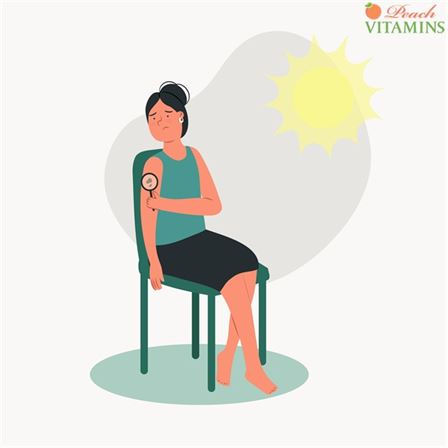
What Food Causes Pigmentation?
Here are some foods that may contribute to hyperpigmentation:
• Dairy products, especially milk and cheese
• Sugar
• Alcohol
• Fried food
• Processed meats
Pigmentation on Skin
Many things can cause dark circles under eyes from a skin infection or sun damage. Most often it’s just genetics, but there are some lifestyle factors you can control. The first step in treating dark circles is to determine what kind they are and how severe they are.
Many people with dark circles do not know why they are so noticeable. Some may assume they are getting old, while others think their makeup is too heavy.
Glowing skin can make you feel more attractive and confident.
Ayurveda and Essential Vitamins
Vitamins are essential nutrients that our bodies need to function properly. They’re needed for everything from energy production to cell growth to immune system health.
But most importantly, vitamins are vital to skin health. Without them, we wouldn’t be able to grow hair, produce collagen, or keep our skin looking young and healthy.
That’s why it’s important to include vitamin supplements in your diet.
Ayurvedic Treatment – Pigmentation Treatment
Ayurvedic medicine for face pigmentation is a safe, effective treatment option. It works by reducing inflammation, stimulating circulation, and improving overall skin tone.
Ayurvedics believe every person is unique and should be treated accordingly. They use individualized treatment plans to help each patient achieve optimal wellness.
Schedule a free consultation with Ayurvedic practitioner Cosmic Mike.
